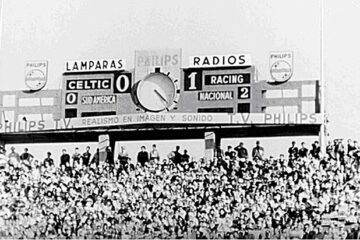Football in wartime | 1942 – The match for life and death!
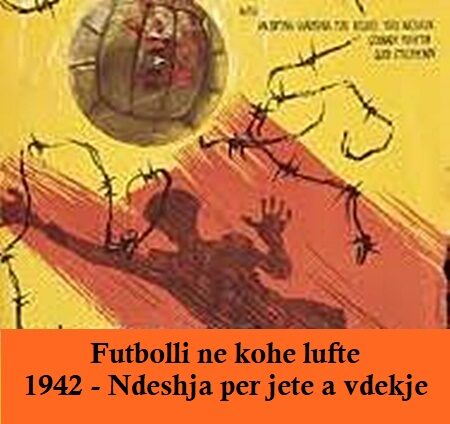
Prologue!
There are football matches in which everything is played, other decisive challenges with the chance to win the title of champion, to stay in the superior category, or to enter this category. The matches of this planetary game can be of different natures, decisive, determining the fate of a team, players, judges, trainers, how will tomorrow be for them. But there have also been matches that have determined the fate of life, which means a football challenge for life or death! And precisely, below we will recall one of those special challenges! The strangest match of the last century which determined the life of several players….
There were two teams on the field, but the supporters were clearly only for one. There were two opposing teams, but the referee of this challenge whistled constantly and only against one, the team with the red jerseys. As the judge himself will later testify, “because I didn’t want to lose my life”!!!
* * *
In the north-west of Kiev, in Ukraine, not far from the city center, between the “Staroobryadnyts’ke” and “Zoopark” cemeteries, there is a football field. It is now a derelict pitch with weeds slowly growing between the piles of dirt and wooden stands that have almost all been destroyed by time. It is a forgotten field, now prey to some groups of children who dream of being champions of who knows what. Just outside, in the square in front of the stadium, there is a statue. This statue depicts an athlete kicking the ball towards the beak of an eagle, under an inscription: “He who deserves it”. The one who deserves it is Nikolai Trusevich who honored the Ukrainian people in this stadium 72 years ago.
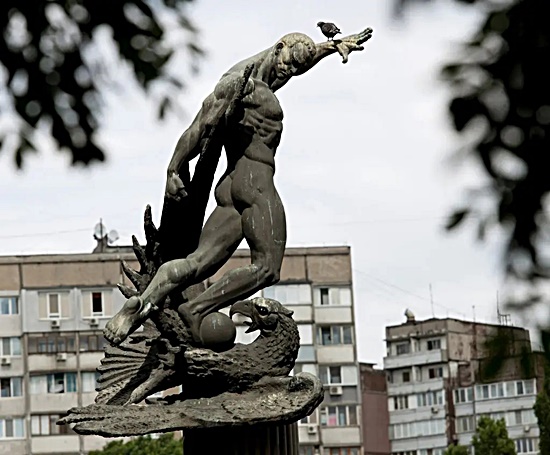
What we are going to show below is one of the most dramatic football matches ever played, which took place during World War II, in Ukraine, unfortunately in the current time we are living in, it is involved in a war again, this along with its closest neighbor, Russia, two countries that were once part of the glorious Soviet Army – “The Red Army”, and together contributed to the victory against Nazism by sacrificing about 7 million lives of the population of these two countries who are now in an intractable conflict. This is the evolution of time, from which there is no living thing that does not get cold! Welcome to “Sports Vision / Hour of Champions”. Enjoy reading! 1. Manuela Audizio, one of the well-known Italian journalists in the sports field, told in 2000 in one of her articles, an almost unbelievable story. In the countries of Western Europe it was not known, but in Eastern Europe for a long, long time it was quite heard and widespread.
From here begins the genesis of a story, of that match for life and death. Let’s travel back in time. On June 22, 1941, when Nazi Germany broke the pact that it would not attack the Soviet Union, the famous Molotov-Ribbentrop pact, it began its invasion. In a short time, the German army destroys the Soviet front and begins to completely occupy the Republic of Ukraine. It is September 19, 1941 when the Nazis occupy Kiev.
Many Ukrainians see entry and cooperation with German troops in the city as the best solution; they think that the new government can be better than the Soviet one. Ukrainian nationalists led by Stefan Bandera become allies of the Nazis. They are fascist and anti-communist, and they want an independent Ukraine. Very soon, time would show that the relations with the German Nazis will be strained.
More or less a similarity with a part of the Albanians who with their choice time proved that they happened on the opposite side. How naive! However, the strength of resistance against Nazi-fascism in Ukraine is very strong. History has proven that no country has paid more than Ukraine with a high price in blood shed during its occupation in World War II. It is said that there are 12-15 million Ukrainians dead from this conflict, more than any other nationality. At this moment, Herman Goering, one of the most important people of the Reich, says that, “it is necessary to kill every Ukrainian male over the age of 15, because being possibly on the side of the partisans, they pose a great danger to our army” .
The Nazi occupation of Kiev will be remembered as one of the most cruel and violent of the entire Second World War. Entire communist and non-communist families are killed, including children and pregnant women. Those who are able to work are entitled to a food ration, others starve. It was said that there are no more stray dogs or cats in the city; the hunger is great.
Between September 29 and 30, one of the darkest chapters of the Nazi occupation took place, the massacre of Babij Jar. 33,771 Jews were separated from their families, taken to the rock of Babij Jar and shot. It is in this climate of desperation, with the Ukrainian winter upon us, that anyone who has anything tries to exchange it for a meal of hot food and blankets. All but one. He is a footballer, the top scorer in 1938 in the Vyssaja Liga (Soviet First Category) with the most important Kiev team, Dynamo. His name is Makar Goncharenko.
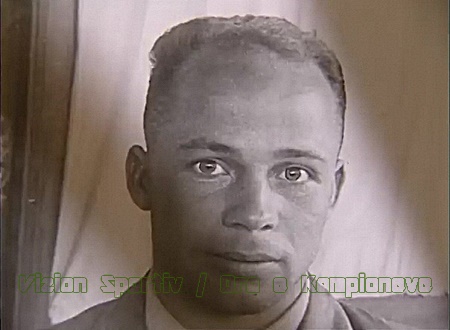
Makar can give up everything except his football boots because football is the only thought that can keep him alive. These days, a Czech resident from Moravia with a native German language, Iosif Ivanovič Kordik, was appointed the new director of the most important bakery in the city. Kordik, who moved to Ukraine after the end of World War II, is a cunning man and manages to enter the ranks of the German hierarchy. Also, according to various sources, his name appears as Otto Schmidtt, Ukrainian of German origin. Iosif Ivanovič, however, is also a fanatical football fan. One day, while he is in the market, he accidentally encounters a emaciated, skin-weary lighter seller. It doesn’t take the director long to realize that the man is none other than Nikolai Trusevich, the goalkeeper of Dynamo Kyiv. Kordik seems to be fascinated by that meeting and not only convinces the porter to work for him at the bakery, but asks Trušević to take back all the players present in the city, offering them a job at the bakery as well. The goalkeeper is a well-known man in Kiev for his charisma and ability between the posts. It is also not difficult to find and convince other players. He even manages to contact some teammates and some players from the other capital team, Lokomotiv Kyiv. So, everyone is happy, Kordik has his personal collection of players with Trusevich, and the latter has his friends who have a job and a guaranteed meal a day.
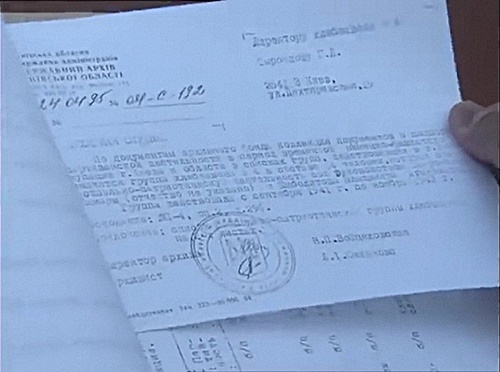
A DOCUMENT THAT PROVES THAT SOME OF THE “START” PLAYERS WORKED IN THIS BAKERY IN THE CITY OF KYIV, AMONG OTHERS SUPPLIERS TO THE GERMAN ARMY LOCATED HERE
At the beginning of spring, those who had been able to survive the winter in the harsh or brutal German oppression, they could barely stand, let alone in the condition to work. This becomes a problem for the Nazis who cannot afford to lose the manpower needed for the war effort. At this moment, Kordik, you would propose a football tournament to the German officers. So the occupiers decide to loosen their grip by building tram lines, reopening shops, and even organizing a football tournament. Because football can also be an effective propaganda tool in Kiev. To somehow calm the blood and attract the attention of the population. The Germans, for their part, are excited because the tension in Kiev and the situation is very tense. In September 1941, a few months before, a group of partisans successfully carried out an attack, blowing up the “Continental” Hotel, which was the residence of the German command.
However, the football tournament will be organized! There will be six teams that will participate in this tournament: “Ruch”, a team from the anti-Soviet and pro-Nazi nationalist movement; two teams of Hungarian officers (including the formidable MGS Wali); a team composed of Romanian officers; “PGS”, the only German team; and Kornik’s team, the team of bakers, baptized as “Start Football Club” just for this occasion. For a time, Kiev was one of the most famous football cities in the Soviet republics, teams like “Saint Petersburg”, “Moscow”.
Trusevich who was the goalkeeper of Dynamo Kyiv before the war, was appointed captain, and Mikhail Sviridovskiy became player-coach thanks to his experience. None of the players have uniforms or shoes, with the notable exception of Honcharenko; the one who even in the darkest moments jealously held onto his football boots. By chance, a few days before the debut match, Trusevich and Putinstin found some red shirts in a warehouse that they could keep; They are made of wool, but it doesn’t matter.
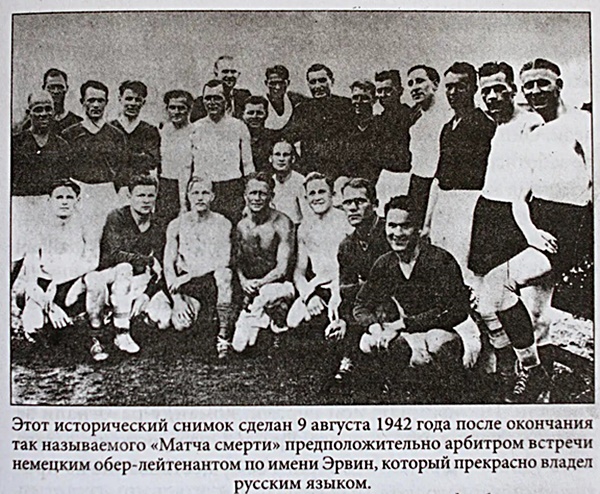
PHOTO OF THE MATCH IN WHICH THE PLAYERS OF BOTH TEAMS ARE FIXED. START – FLAKELF!!!
2. “Start Football Club”
The team got the name “Start” and not “Dinamo”, because “Dinamo” itself was an army team, especially since many of Dinamo’s players were members of the KGB, the Soviet secret service. Or in the end, that’s what the Germans suspected, because they didn’t have a good eye for this team. However, the fact is that “Start” is a really strong team, made up of former professional players of “Dinamo” and “Lokomotiv”. The other teams have amateur players and of a lower level.
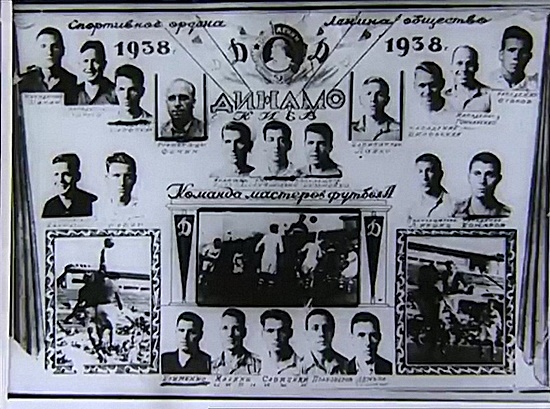
PHOTO OF DINAMOS SE KIEV – CHAMPION IN 1938
It is June 7th, Start, exhausted from working shifts and in unsafe physical conditions, debuts against “Ruch” at the “Repubblica” stadium. The match ends 7 to 2 for the reds and the captain of “Ruch” is furious; he wants “Start” to be disqualified. It is unacceptable for a team of prisoners of war to participate in the tournament. But the Germans, thanks to Kordik’s mediation, decide otherwise: All Start matches will have to be played in another, smaller stadium on the outskirts of the city in the “Zenith” stadium. The Reds, however, continue to win: 6 to 2 against the Hungarian officials’ team, 11 to 0 against the Romanian team, 6 to 0 against “PGS” and 5 to 1 against “MGS Wal”.
Each victory represents a light for the citizens of Kyiv, who attend “Start” matches in increasing numbers. The rematch against “MGS Wal” was organized only 2 days after the last game of the Reds to tire Trusevich and his teammates, but the determination and heart of these players is stronger than any obstacle; This match also ends with victory: 3 to 2. For the Nazis and their allies, “Start” risks turning into a serious political problem; these prisoners become day by day the symbol of Soviet resistance. Further, it is decided that the tournament should be decided by a grand final. So Start must face “Flakelf”, a team of Luftwaffe soldiers from the Eastern Front, and who was considered by all to be an invincible army.
The match will be played on August 6. “Zenith” stadium has never been so full before. The entire population of Kiev is there with the anger and desire for revenge that belongs to any oppressed people. And here “Start” wins 5 to 1. The match against the Germans becomes more and more evident and the stakes get higher and higher. The Nazis stage a rematch three days later. Kordik, Trusevich and all the players try to push it: three days is not enough to regain strength. It is hot, they are tired and they are hungry. The answer, however, is a resounding “no.”
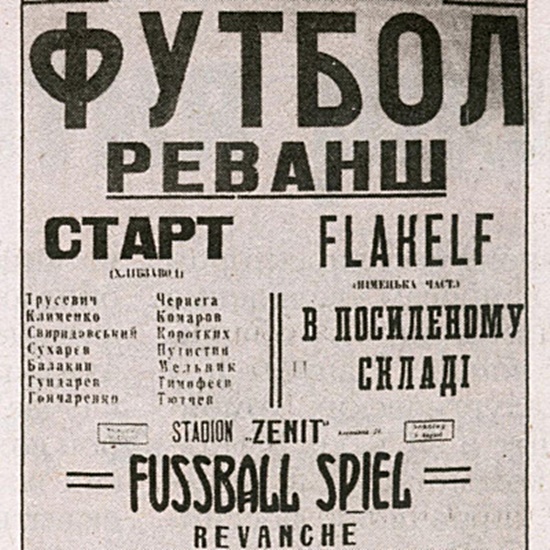
The streets of Kiev are stamped by the Germans with leaflets and meeting posters. There is talk of the match in which the Aryan race will show its strength, where the hand of the Reich will crush Soviet ambitions. There is one detail that makes all Ukrainians understand that this will be a match unlike any other: for the first time, the opposing team is not written on the flyer. The Nazis recalled all the strongest German football players from the front. The constituent formation of “Flakelf” will not be the same as the first match.
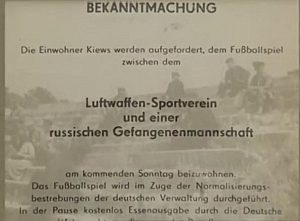
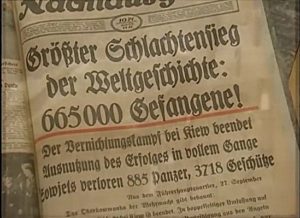
3. The match
Is August 9, 1942.
The “Zenith” stadium is full of people, but this time the stands are filled with Wehrmacht officers in full uniform. “Start” fans are left with only a small segment of the curve. There are heavily armed German soldiers all around. To make sure everything goes right, the Nazis have chosen an SS lieutenant as referee. Before kick-off, the lieutenant, accompanied by a Russian translator, enters the hut that serves as the Start dressing room and reminds the players that when they reach midfield, they will have to shout “Heil Hitler” with their arms raised.
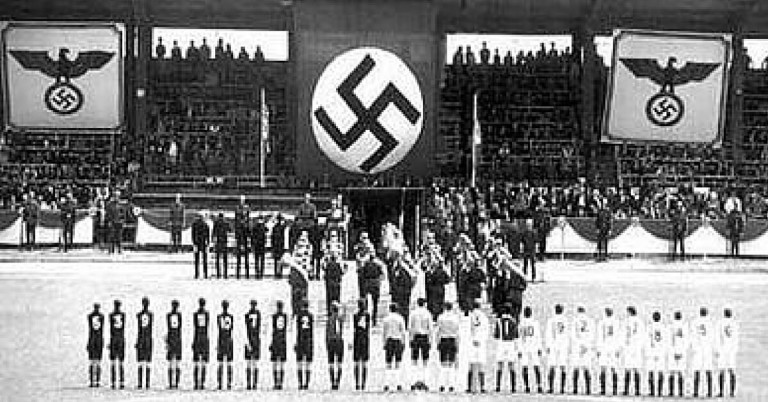
PHOTO: ASPECTS FROM THE MOVIE “VICTORY”
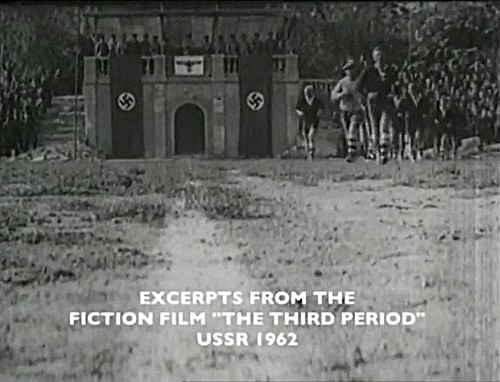
PHOTO OF THE FILM “THIRD PART” SOVIET PRODUCTION – 1962
But…. The players enter the field and after greeting the Germans, with their heads down without shouting they pronounce the Soviet motto “Fitzcult Hurà!”, or “Long live physical culture” !». A motto that was not completely unknown to the German army because «Hurà!» it is also the battle cry of the Soviets. It is true that “Start” wore the red jerseys, but did not present communism in BS, but simply the jerseys that they had been able to provide, so much so that it is true that they would not do the Hitler salute, even though it is said that no one had forced them. The match begins in the most violent ways.
A German striker hits Trusevich in the head, the goalkeeper lies unconscious on the ground for several seconds, but the referee does not whistle for a foul and the Germans take the lead. The Reds watch their captain struggle to get up, his eye swollen shut and his left temple drenched in blood. They look at each other and the spectators. “Music” must change now. The Germans, however, did not surrender. They didn’t just score, they mowed down and elbowed the Ukrainian forwards.
Among the players of “Start” is Ivan Kuzmenko, a tough player, a tenacious midfielder. It was he who scored the equalizer on a counterattack with a shot from 30 yards. “Music” had changed. The reds in the wings of enthusiasm attack and in a few minutes Honcharenko scores 2-1 with a serpentine in the area and then 3-1 with a half-life shot. The Germans are in disbelief. In the quarter-hour break between the first and second halves, as the players return to the dressing rooms to regain their strength, a German officer enters the Soviet dressing room. He begins to compliment the players, in a perfect Ukrainian accent, telling them that he is impressed by the quality of their play. He says he admires the way they played, but that they should lose in the second half: “Just think about the consequences for a minute.”
The second part begins. The Germans attack and easily manage to equalize, 3 to 3. Enthusiasm in the German ranks is high as well as desperation among the Ukrainian fans. The heart, however, is stronger than the head, especially in cases like this. Trusevich and his friends understand that the game should not be won for them, nor for the citizens who came to see this match, but only for one thought: the idea that by winning that challenge they would show the Germans the superiority of the Ukrainian, Soviet and which they could not stand. Thus, “Start” defeats reason, conquers the field meter by meter and scores the fourth and then the fifth goal. At the stroke of 90 minutes, Klimenko, a small and fast defender, takes the ball and dribbles past the German defense. No one can stop him, he even goes past the goalkeeper. The gate is now empty, no obstacle to score the sixth… But Klimenko stops. He looks down on the Nazi officials and instead of scoring, he kicks the ball towards the midfield, causing laughter from the red and blacks and their fans. An action that will be paid dearly. The match ends 5 to 3 for “Start”. At the final whistle, a dark silence falls on the stadium. The Ukrainian fans who were celebrating until a few minutes ago are also silent.
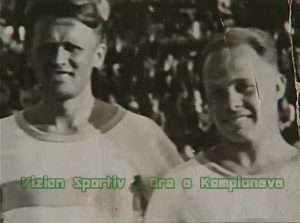
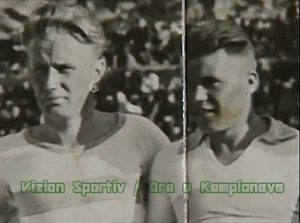
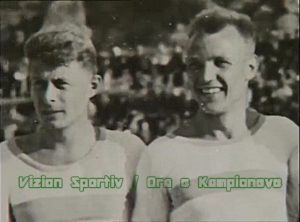
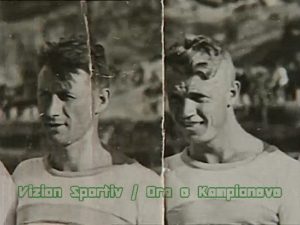
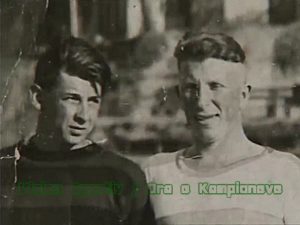
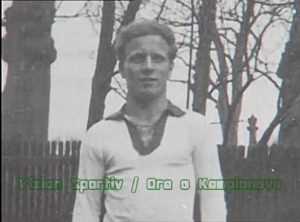
In the photo are some of the Ukrainian players who played that match. In the last picture with the white shirt, he is the only player of “Flakelf” who will testify years later for the development of this match.
As Goncharenko later pointed out: 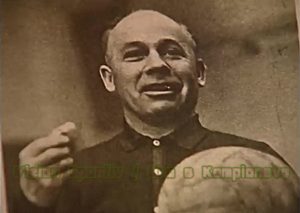 “We found ourselves in a “dark”, “gloomy” silence of the empty stadium, alone in the middle of the field, we realized that with our goals we had also signed our death sentence… We extended our stay on the field, as if being there they would be safe. Fear began to take over us, we had simply done what we thought was right, not to be heroes, but only as Ukrainians who had the dignity and honor of men and footballers… Now we were afraid of what was to come.. We had the same fear again as at the beginning of the match that we had chased during it……so much fear that we showed it.
“We found ourselves in a “dark”, “gloomy” silence of the empty stadium, alone in the middle of the field, we realized that with our goals we had also signed our death sentence… We extended our stay on the field, as if being there they would be safe. Fear began to take over us, we had simply done what we thought was right, not to be heroes, but only as Ukrainians who had the dignity and honor of men and footballers… Now we were afraid of what was to come.. We had the same fear again as at the beginning of the match that we had chased during it……so much fear that we showed it.
4. Nazi revenge?
From some sources it appears that the German authorities, on the contrary, had not created any problems. There will be no reprisals, no violence, no threats. But it is true that four of the players of the “Start” team will be arrested and then killed. Sources say that this will happen a few days after the final match and that it has nothing to do with the end of that match. The problem for the Germans was that the bread that was produced in the oven where some of the players of the former “Dinamo” team worked was contaminated, the flour was mixed with glass dust in the bread that was intended for the German army in that area. There are many possibilities, especially the fact that these players were secret agents of the KGB. But do you think this is the true story of the match for life and death?
The Gestapo, after allowing a few days to pass, on August 18, nine players of the “Start” team were arrested and tortured. Mykola Korotkykh is the first to die. The other players are sent to the labor camp in Syret. On February 20, 1943 Kuzmenko, Klimenko and Trusevych were executed.
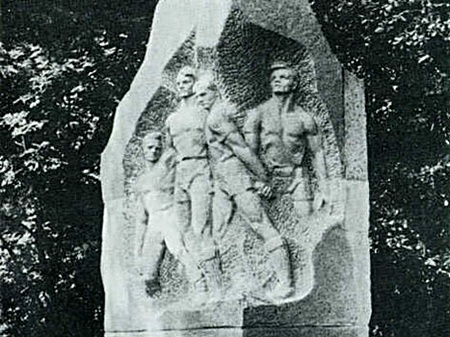
Monument dedicated to 4 murdered players.
A witness of this macabre event will say: “Kuzmenko was beaten and then executed in the head; Klimenko was also beaten and when he fell to the ground he was shot behind the ear. Trusevic, the giant goalkeeper and captain was savagely beaten, he rose from the ground bleeding and shouted in front of his tormentors: “Our Red Sport will never die”; a guard killed him with a burst of machine gun…he died with the shirt of Start”. Their bodies were found at the foot of the “Babij Jar” rock. The only ones who survived are Fedor Tyutchev, Mikhail Sviridovsky and Makar Honcharenko.
The facts are much more than that because the real story begins on November 12, 1943, when the Soviets liberate Kiev. The surviving witnesses did not speak to anyone about the match. They were even put on trial by the then Soviet government. Koncharenko will be sentenced to 25 years in prison. He was quite popular in his youth, and was considered the main witness of this event, and he will be the only player of the “Start” team who survived until about 20 years ago, in the early 2000s, when he will change his life. For Stalin, anyone who plays football with the enemy is a collaborator; he cannot be considered a patriot!!!
In the fall of 1943, something was going to happen. A writer, Lev Kasil, who is also a war correspondent, writes an article for the newspaper “Svezia”, in which he talks for the first time about the Ukrainian players who were killed by the Nazis. He doesn’t add anything else, however this story starts to circulate. In 1947, in the newspaper “Stalinskoja Plevna”, the title “Death match” was written for the first time. The article is named after a journalist Aleksander Bozhakovski. While in 1958, Bozhankovski dedicated to this story a novel titled “Trevozhnie Ubllaka” (Threatening Clouds).
And everything is right here. A team of Soviet communist soccer players, forced to play against the Nazis, earn thanks to their heroic presence on the field through soccer, where they are later killed for revenge and reprisal. In the 1950s, the story of the “Death Match” gained popularity, because in 1958, when Bozhakovski’s novel was published, another novel appeared by the writer Piotr Severov and Naum Kalenski, called “Pozledni peštolk” (Duel of end). The two novels in the same year prove that the legend of the “Death Match” was very well known in BS. In the post-war years, the world was divided into two blocs, that of the West led by the USA and the East led by BS. in the Eastern bloc, in Eastern Europe and the world of communist countries, this story of the “Death Match” circulates rapidly. Four years after the two published novels, for which I mention above, a film by Evgeni Karrelov, “Pjesa e trete” or “Treti tajm” (1962), is made, which talks exactly about this story according to the script of the written novel. from Bozhakovski.
This year, another Hungarian film titled “Two parts to hell” is released, directed by Zoltan Fabri. The film stages “The deathmatch”, with the only difference that the events take place in Hungary and not in Ukraine. This film will have an extraordinary success in the countries of Eastern Europe and to some extent in some countries of the Western bloc. This story is now well known in the Soviet Union. The government wants to do something and so in 1965, “The Soviet Supreme” makes the decision to distribute some medals after the death of four players of the heroic “Start” team. However, the secret service KGB, signals the Soviet government of the time, about the organized medal event saying that the event does not have much clarity and even assuming that the four victim players who were killed after the match, may have been collaborators. According to the KGB, they had agreed to hold a match with the occupier simply to entertain them and the public for the benefit of the Nazis. In fact, despite being informed, the Soviet government awarded the medals to the four players. At this moment BS aims to re-evaluate Ukraine. Ukraine, for its part, as I mentioned in the first lines of this article, was the only one of all the Soviet republics that was easily conquered and many of them became collaborators of the Nazis.
After that, Ukraine had fought heroically, making sacrifices even to become part of the winners of that cruel war. We are in 1965, that is, 20 years since that tragic event and many of the people who witnessed that match are no longer alive precisely because of the sacrifices they made in the war against the Nazis. The Soviet government of the time was however concerned by the fact that precisely in that republic he had many collaborators. In fact, it is not known exactly how many were collaborators and how many opposed the occupation and how many are currently in the middle of the war, however, during the 60s, the thesis of the collaborator, the collaborator, existed. The government, in order to calm the situation, wants to draw attention through this event where a Ukrainian team, among others with real professional players, challenges the Nazis even though in the sports field, under the name of resistance.
The revaluation of Ukraine, which in fact did not enjoy a good opinion in other republics, taking examples of such events, was more or less the goal of the Soviet government of the time. On the contrary, beyond the awarding of medals to the victim players, the Soviet government is now searching to find the rest of the players of the “Start” team, to interview them and to testify to the truth. And here, various interviews are circulating like Goncarenko’s as one of the primary, first-hand witnesses. However, all of the survivors in the interviews show what the government wants. So a group of heroic players who beat the Germans in a football match and for revenge four of the players are killed. In 1971, in Kiev, in the “Zenit” stadium, where the match against the Germans of “Flakelf” took place, a monument will be erected dedicated to the four murdered players and which is still there today (or I hope it will still be there , seeing that Ukraine is experiencing a war). Further, the “Zenit” stadium would be renamed the “Start” stadium dedicated to that team.
And this story is very successful thanks to the films that were produced, but especially thanks to the film by the Hungarian Zoltan Fabri “Two parts to hell” which was also shown in the West. In 1981, Hollywood producers decided to take the event of Fabri’s film, transforming it into a story set in the West, set in occupied France, where a group of players from different countries of occupied Europe, gathered in a Nazi camp, they organize a football match, a challenge precisely against a team with professional German players. The film will be called “Victory” with the well-known actresses Sylvester Stallone, Michael Caine, real players like Pele, Dejna, etc. it will be a success in cinemas all over the world. Times flow and during the years 1989 – 1990, everything from the birth block collapses. With the fall of the Berlin wall, it is time for big changes.
5. “Wind of change”!
The title of a song, among others, by the German rock group, “Scorpions”, whose verses show the political changes, the collapse of BS and the end of the cold war: The world is closing in And did you ever think? That we could be so close? Like brothers The future’s in the air I can feel it everywhere Blowing with the wind of change Take me to the magic of the moment On a glory night Where the children of tomorrow dream away……..
After the collapse of the Soviet Union, things began to they really change. A journalist named Xorxh Kuzmin said that in 1992, something was not quite right with the legend of the “Death Match”. And this journalist will be the first to lift the veil of mystery of that match, perhaps never played. It should be said about this story that, since the beginning of the 90s, it was only talked about in Russia and Ukraine. Even in the 90s, Goncharenko would say in a television interview that everything he himself had said in the previous years was not true. The Soviet leadership had imposed on him to prove exactly what she wanted.
This is where a voluminous work of Russian and Ukrainian journalists and historians begins, where everyone is looking for witnesses, not only the players who had played that match because almost all of them had died, but also those present on the steps of the stadium, the spectators, especially those who were very young, almost children at the time. And many of these witnesses will confirm the fact that things did not happen exactly as it was propagated before the 90s. It was not a violent match on the part of the Germans, there was no pressure, no provocation or one-sided judgement.
It was indeed a fighting match, of course, but a fair one. According to the evidence, even at the end of the match there were friendly handshakes between the players of the two teams. It will be Goncharenko himself to say that in reality the story of the German officer entering the changing rooms to threaten the Ukrainian players was a slander, an added detail. It had never happened, no one threatened them. Thus, in 1994, Simon Cooper writes “Football and Power”, in his famous book, in which he shows that the story of the “Death Match” is a fiction. Kuper himself traveled to Kiev, he went to see the museum of the “Dinamo Kiev” football team. Meanwhile, Cooper had read about this event and had asked one of the managers of the museum, which was the truth, to which he had received the answer that it is not what has been said for years. It was simply a Soviet propaganda legend that had been circulating successfully for many years, where in reality that event was much more banal, simple and not at all spectacular. One of the most responsible journalists in the West about this event is a Scotsman, Andy Dukan, who in 2001 published a novel “Dynamo, the defender of the honor of Kiev”, where he brings back the Soviet legend. However, Ducan explains in the novel that what he has written is a very beautiful story, but it does not have to be true.
The article by Manuela Audizio, mentioned above, who reopened the story, is a sequel to Ducan’s novel. She demonstrates that the legend, even though it was proved to be fictional, even by a western writer like Simon Cooper, was still circulating in the countries of origin, to the point that this Italian sports journalist writes for the newspaper “La Reppublica” and concludes by saying published a book. In 2005, there will be a joint investigation by Ukraine and Germany to understand what had happened, how it stands and how true that event was.
The truth appears that they will not find any connection in the death of four players of the “Start” team (among others, they also worked as workers in the bakery of the city), with the match against “Flarer” of the Germans. Can we finally say now that this event about the “Death Match” was actually created as a legend? Was it simply a propaganda tool in the hands of the Soviet leaders to spread through it an idea that Ukraine has also done its duty and its part in the war against Nazism.
But it should be added that even if it became a legend, it has had an unimaginable success even in Western countries, even in countries that had nothing to do with communism, had no interest in carrying and spreading such a story. even that Soviet propaganda. If we want, we can even call it a case of Ukrainian collaborationists at that time. Obviously, some Ukrainian players agree to organize a football match with the Nazi occupiers, taking part in an event that was Nazi propaganda for the time, precisely in 1942. But it is true that four of those players of the “Start” team were killed by the Germans . Yes, they were killed by the Germans, but not for winning the match, but because they tried to kill the Nazi officers by using glass powder in the flour. It was known that these players also worked as KGB agents and were known anti-Nazis. And then what is the truth? What had happened in that match? Historian James Riordan, through a document, shows that on the contrary, it was a great sporting example in the middle of the war.
The Ukrainians and the German invaders, enemies, played a match, a real challenge against each other through football, and the one who was the best won. So it was a great triumph of sport. That’s it! However, some questions arise: “How free and democratic was the decision to make the Ukrainians play”? Were they forced or, on the contrary, did they agree to it? We don’t know this and maybe we will never find out. Personally, I do not find any source or fact that proves and answers the questions as above. It can also be simple disinformation from the nature of some people who prefer to give or change the reality of such beautiful events. A group of disinformation still exists today, who have the skill to turn events in their interest to attract attention. This is how this event has remained, still real today thanks precisely to “fake news” disinformation that survives exactly thanks to these controversial events that even the public themselves are the favorites as beautiful as we want them to be and not in reality as they happened.
For this reason, even in our days, many believe that the “Match of the Death” really happened just like the legend, at least you can tell these people that there are facts that dilute the reality. Challenges like this, however, cannot be censored and word of mouth makes them popular among people. Over time, the exploits of the “Start” players became legendary, and the legend easily turned into a myth. Monuments and statues were erected in the name of the eleven heroes of Zenith Stadium (now renamed Start Stadium). Movies and books are published keeping alive the memory of what we all know today as the “Game of Death”.
We invite you to watch the documentary about this match: “Fatal 11”
Enjoy!!!
By: Pjerin Bj March – May 2024
_________________________________
Sports Vision + /The Hour of The Champions a sports page active since 2013
References used to build this article : “Numeri Primi” (RadioRai) / Various online articles / Documentary “Fatal eleven” (2005)
Photos : some were taken from the documentary “Fatal eleven”, and others from Google
Discover more from Sports Vision +
Subscribe to get the latest posts sent to your email.




